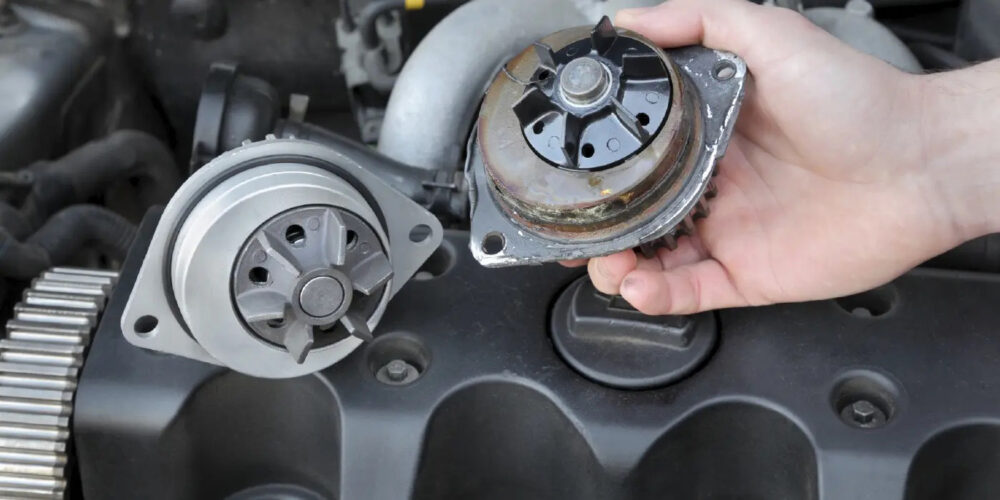Q. Does noise coming from a wheel always mean the wheel bearing is bad?
A. No. The noise could be from the wheel bearing, or it could be from the brakes, or a bad outer constant velocity joint.
The classic symptom of a bad wheel bearing is typically a cyclic chirping, squealing or growling noise that changes in proportion to vehicle speed. The sound may disappear at some speeds or only occur at certain speeds. The noise may get worse when turning, or it may disappear momentarily. So it’s difficult to make a diagnosis based on noise alone.
A caliper that’s sticking or a brake pad that’s loose and dragging may make a metallic scraping noise as it rubs against the brake rotor. The frequency of the noise will also change in proportion to vehicle speed, but will often go away or change when the brakes are lightly applied.
Noise that only occurs when braking is likely a brake problem such as worn pads, not a bad wheel bearing.
A popping or clicking noise when turning is a classic symptom of a bad outer CV-joint. Also note the condition of the CV-joint boot. If torn or leaking, the boot should be replaced regardless of the condition of the joint. If the CV-joint is noisy, it needs to be replaced. A complete axle shaft with new or remanufactured joints on each end is the fastest fix for this kind of problem.
If a wheel is making noise, the brakes, wheel bearings and CV joint should all be inspected to determine the cause as all pose a potential safety risk. Any parts that are worn or damaged must be replaced.
Q. How do you check wheel bearing play?
A. Raise the vehicle so the wheel is off the ground, then grab tire at the 12 and 6 o’clock positions and rock the tire back and forth. As a rule, you should not feel any play or looseness if the vehicle has sealed wheel bearing cartridges or hubs with sealed wheel bearing assemblies. On older vehicles with serviceable wheel bearings, a little play is normal but a lot of play is not. Refer to the vehicle’s service specifications for the maximum amount of acceptable play.
Wheel bearing play can be measured with a dial indicator by placing the dial indicator against the hub and rocking the wheel in and out by hand. As a rule, you should see no more than .005 inches of play in the bearings if the bearings are good.
You can also rotate the tire by hand while measuring play, but be careful not to confuse rim or hub runout with looseness in the bearings. As a rule, hub runout should be .0015 inches or less, and no more than .002 to .003 inches of runout at the lip of the rim. If runout exceeds this amount, try reindexing the wheel on the hub, or remove the wheel and measure runout on the rotor or hub itself.
If there is still too much runout, cutting the rotor with an on-car lathe can eliminate or reduce runout at the rotor. But it can’t correct runout if the cause is too much play or looseness in the wheel bearings. The only fix for that is to replace the wheel bearings or hub unit.
A common error with hub assembly installation is applying inadequate axle nut torque, which can result in the axle nut backing off during operation, according to Rod Hodge, automotive aftermarket product manager for Timken.
This error can occur when:
1) a torque wench is improperly calibrated or not used;
2) the axle shaft is dirty and/or damaged, which requires excessive torque on the axle nut to draw the axle shaft into the hub assembly and;
3) the axle shaft is not fully seated with the proper amount of axle nut torque resulting in insufficient bearing clamp load on the hub assembly.
Clean and inspect the axle shaft prior to installing a new hub assembly. Use a fine file, wire brush, emery cloth or honing stone as appropriate to remove any debris, nicks or burs, Hodge said.
After installing the new hub assembly, tighten the axle nut to the vehicle manufacturer’s torque specification using a torque wrench. Note: There should be no clearance between the axle flange face and the back face of the hub assembly.











